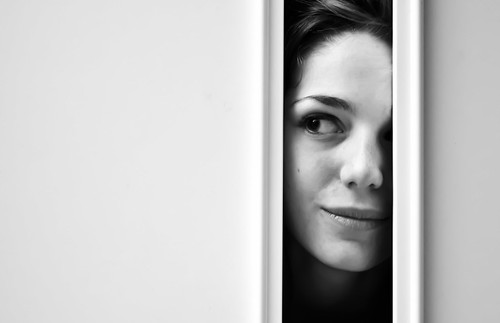Who Killed Adult Curiosity?
As young children, curiosity made us jump in a mud puddle. Try to catch fireflies. And chase our shadows.
It was our motivation for learning and play.
When we discovered that if we mixed red and yellow finger paint, we created orange, we went on a frenzy mixing all types of colors. Our final images were modern surrealist paintings of flowing purples, brown, blacks and grays.
Losing Our Curiosity
Yet as we aged, we stopped embracing our curiosity. We lost touch with the playful feeling of questioning things and running with wild abandon as we chased rainbows.
We lost that epiphany of discovery, a sense of excitement to learn and our motivation to try new things. Instead we retreat to the safety of routine, status quo and the familiar. We avoid the world of change and uncertainty where curiosity actually resides.
For many of us, curiosity has a negative connotation. We believe it does kill the proverbial cat.
Curiosity Is A Necessity
Curiosity should not be something we avoid. It should not have a negative connotation for us.
Why? Curiosity is usually the driver to inventions and innovation. It is the motivation to learning.
Curiosity is something we should embrace, cultivate and practice daily!
According to neuroscientist and researcher Min Jeong Kang, curiosity is the desire to learn what is unknown. It’s the difference between when answers are presented and questions are presented.
Ironically, the research shows that if we just give answers to people, through lectures for example, our curiosity is absent. If we give audiences interesting questions to ponder, their curiosity is peaked and the brain goes to work. Then when the answers come, their curiosity is satisfied.
A Little Learning Leads To More Learning
Kang’s research team found that the desire to learn increases with small increases in knowledge.
In short, a little learning leads to the desire to have more learning.
The gap between what one knows and what one wants to know, continues to grow as we continue to learn. Our brains like to embrace life-long learning.
We are born to learn! We have to constantly learn to adapt to the world around us.
Author Hélène Trocme Fabre says that learning is the act of welcoming something new into something that is already there. That’s the act of embracing curiosity.
Curiosity marks the beginning of the creative process! Research shows that individuals that score high for curiosity also score high in creativity.
Curiosity is also linked with innovation.
In order to be successful in the 21st century, we’ve got to return to our childhood roots of being more curious! To be more creative and innovative, we’ve got to start with being more curious!
What are some things you do to embrace curiosity daily? What motivates us to avoid new things and a sense of curiosity?



Smiling at this, Jeff, because I have wondered the same “forever”!
Me? I read all kinds of stuff that is considered far afield from my profession … because it stimulates ideas that with my “connectedness” strength, I can connect to lots of other areas. I observe groups & situations & the world & always see something interesting that triggers ideas.
Questions are my life & always have been. How do people live without questioning?
Jeff, your post made me think of a book recently published by a Canadian journalist: The Power of Why, by Amanda Lang. She focuses on a similar theme — about how adult curiosity stimulates innovation, but how it has been stifled. It is on my reading list. Maybe it should also be on yours!
Elizabeth – thank you for the title and author name.
Jeff – I thought about this as I read the Sunday NYTimes and wondered how others don’t read (observe, etc.) and wonder more.
Elizabeth – What keeps you the way you are and curious?
[…] Get started with: Who Killed Adult Curiosity? […]
[…] Découvrez-le en lisant : Who Killed Adult Curiosity? […]
[…] Découvrez-le en lisant : Who Killed Adult Curiosity? […]